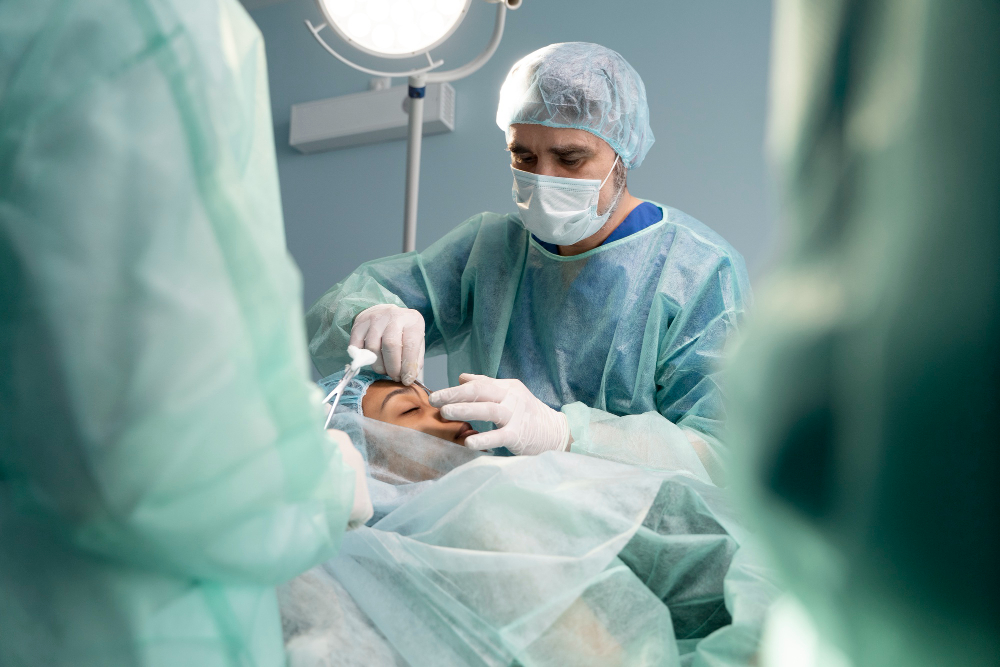Not every nose surgery delivers the results patients hope for. While many people are satisfied with their initial procedure, some find themselves dealing with unexpected complications or aesthetic concerns that require further attention.
Revision rhinoplasty, also known as secondary nose surgery, addresses these issues by correcting problems from a previous procedure. Knowing when this type of surgery becomes necessary can help patients make informed decisions about their care and set realistic expectations for their outcome.
Common Reasons for Revision Surgery
Several factors can lead to the need for a secondary procedure. Sometimes the original surgery doesn’t achieve the desired aesthetic result, while other times functional problems develop that affect breathing or overall nasal health. These issues may become apparent immediately after the initial recovery period or develop gradually over time.
Aesthetic Concerns
Visual irregularities that may require revision include:
- Visible bumps, dents, or irregularities along the nasal bridge
- A pinched or overly narrowed nasal tip
- Asymmetry that creates an unbalanced appearance
- An artificial look that doesn’t harmonize with other facial features
- Insufficient or excessive reduction of the nasal bridge
- Inadequate tip projection or refinement
Functional Problems
Breathing and structural issues that often necessitate revision:
- Difficulty breathing through one or both nostrils
- Collapse of the nasal valve, which restricts airflow
- Structural weakness due to removal of too much cartilage or bone
- Internal scar tissue that blocks the nasal passages
These issues can significantly impact quality of life. Breathing difficulties may affect sleep quality, exercise capacity, and overall well-being. Meanwhile, aesthetic concerns can diminish self-confidence and leave patients feeling dissatisfied with their appearance.
The Complexity of Secondary Procedures
Revision surgery presents unique challenges compared to primary rhinoplasty in Toronto. During the initial procedure, the surgeon works with intact tissue and a natural nasal structure. However, revision surgery requires working with altered anatomy, scar tissue, and potentially weakened structural support.
Working With Altered Anatomy
The amount of cartilage and bone removed during the first surgery plays a crucial role in planning the revision. When too much tissue has been taken away, the surgeon may need to use grafts to rebuild and strengthen the nose. These grafts can come from the patient’s own septum, ear cartilage, or rib cartilage. In some cases, synthetic materials may be appropriate.
Managing Scar Tissue
Scar tissue from the previous surgery adds another layer of complexity. This tissue can be thick and rigid, making it more difficult to reshape the nose and achieve smooth contours. An experienced surgeon must have the skill to work through these challenges while minimizing additional trauma to the delicate nasal structures.
Choosing the Right Specialist
Selecting a qualified surgeon for revision work is perhaps the most important decision a patient can make. This procedure requires someone with extensive knowledge of nasal anatomy, surgical technique, and aesthetic principles. A surgeon who specializes in facial procedures will have a deeper grasp of how the nose relates to other features and how to create balanced, harmonious results.
Non-Surgical Alternatives
It’s worth noting that some patients explore non-surgical options before committing to revision surgery. For minor irregularities, injectable filler in Toronto can sometimes provide temporary correction by smoothing small depressions or asymmetries. However, this approach has limitations and is only suitable for specific issues.
The Consultation Process
When consulting with a surgeon about revision rhinoplasty, patients should expect a thorough evaluation. The surgeon will assess skin thickness, examine internal and external structures, and discuss realistic outcomes based on the individual’s unique anatomy. Just as patients considering eyelid surgery in Toronto would seek a specialist with specific expertise in that area, those pursuing nasal revision should prioritize surgeons who regularly perform this complex procedure.
Recovery and Long-Term Results
The recovery process for revision surgery is similar to that of a primary procedure, though healing times can vary depending on the extent of work required. Patients typically wear a protective cast for about one week, and most visible swelling subsides within two to three weeks.
The Healing Timeline
The internal healing process takes longer than external recovery. The nose continues to refine and settle for several months after surgery, with subtle improvements appearing gradually throughout the recovery period. Patience is essential during this time as final results develop.
Importance of Expertise
Patients should know that revision surgery often represents the final opportunity to achieve their desired outcome. While further revisions are possible, each subsequent procedure becomes more challenging due to accumulated scar tissue and reduced structural support.
Final Thoughts
Revision rhinoplasty serves an important role in correcting unsatisfactory results from previous nose surgery. Whether addressing breathing difficulties, structural problems, or aesthetic concerns, this specialized procedure requires careful planning and skilled execution. Patients considering revision work should seek consultation with a qualified facial surgeon who has specific experience in secondary nasal surgery. Dr. Cory Torgerson has extensive training in facial anatomy and regularly performs revision procedures, helping patients achieve both functional improvement and natural-looking results that enhance their overall facial harmony.



